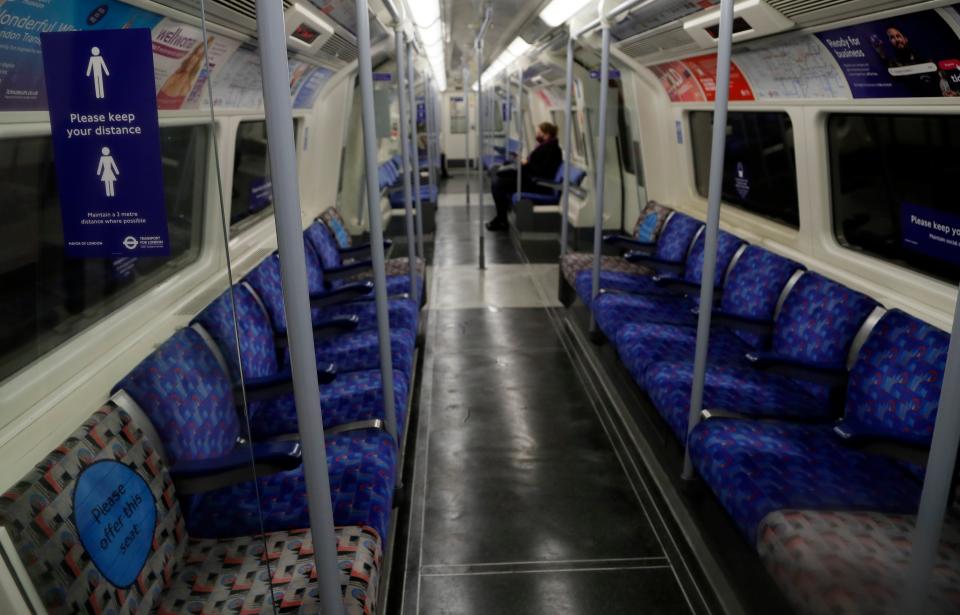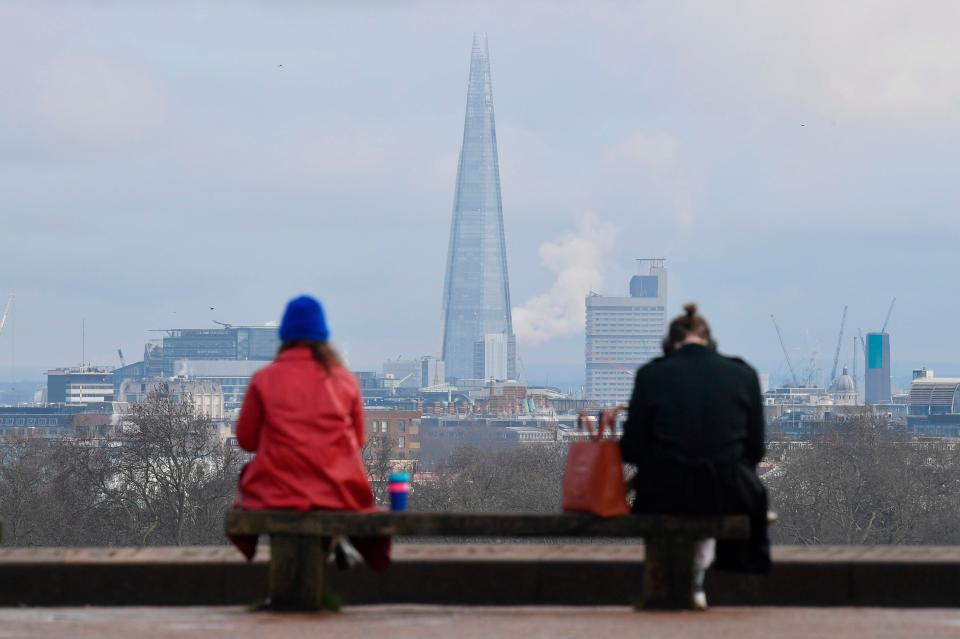London Covid deaths: 12,600 die in capital — so just what went wrong?

For London it began on March 6. The first confirmed death in the capital from the Coronavirus virus that has wreaked such havoc over the past year was an elderly man admitted to the Royal London in Whitechapel with breathing difficulties.
Our city has been on the frontline in the monumental struggle against the pandemic ever since with both the first and second wave ripping through homes, hospitals and the care sector earlier and faster than the rest of the country.
Of the grim tally of 100,000 UK deaths passed yesterday, 12,677 have been in London.
The capital’s death rate of almost 200 per 100,000 population from March to December is considerably higher than the 150 level for England as a whole.
So why has the UK – and London in particular – been so appallingly badly hit by a disease that has results in death tolls in the dozens or low hundreds in many other countries?
With hindsight London was always a vulnerable target. The capital is arguably the greatest global crossroads, its biggest aviation hub, home to more international students than virtually any other metropolis. More Britons take international flights than the population of any other country. London is not Wellington or Auckland.
The virus took hold just after the February half term when thousands of Londoners packed into bars and restaurants in the Alps in one of the worst superspreader events of the whole pandemic.
Knowing that perhaps it was even more important that borders were shut early and hard to limit the volume of carriers coming into the country as many medical experts demanded. But they were not. Chaotic messages ensued. Holidays were on; now travel corridors were the thing instead.
The travel quarantine measures did not come until June and only now are the last of the travel corridors being closed.
It is now also apparent that much of the preparation and early response was misguided. Britain’s planning assumed that the next pandemic would be a flu rather than coronavirus based illness. Without the direct experience – thankfully - of SARs and other deadly viral diseases such as Ebola, advanced test and trace infrastructure on a scale that did such a remarkable job at containing spread in south east Asian countries such as South Korea and in much of sub-Saharan Africa, was not in place.
When a nationwide test and trace system did get underway – at a cost of £12 billion -responsibility was farmed out to private companies with limited experience in controlling a highly infection disease. The expertise of local health authorities with on the ground knowledge, was largely ignored.
There was a shortage of ventilators in the early stages of the pandemic too and the chaos over the supply of masks, gloves and other PPE equipment also highlighted the inadequate preparation.
Some of the early public messages were confused. Some Londoners began routinely wearing facemasks on the streets from as early as March, sensing intuitively that a physical barrier had to be a help in reduce the risk of infection. But early official advice was that there was no scientific evidence that face coverings made any difference. It was only in June that the stance changed, months behind the rest of the world.
Another major factor that will have to be examined in detail in any future enquiry into Britain’s death toll will be the state of the nation’s health. Britain has one of the world’s highest obesity rates with around a third of adults classified as having a body mass index of more than 30 – the threshold of clinical obesity.

Increases in life expectancy rates have slowed all over the developed world in recent year. But more rapidly in Britain than almost any other comparable country.
Should that have been, as distinguished epidemiologist Sir Michael Marmot suggested on Radio 4’s Today programme this morning, the “canary warning” that something had already gone catastrophically wrong with Britain’s public health?
Has growing inequality also played a role? As Sir Michael pointed out death rates for Covid-19 mirror that for other deadly illnesses with the poorest and most deprived faring worst.
In London poor housing, rampant overcrowding, hospitals – albeit world class ones - straining at the limit of their capacity even in quieter times, are likely all to have contributed to the capital’s high death rates.
London was always a vulnerable target. The capital is the greatest global crossroads
Many of the capital’s less well paid employees – cleaners, bus drivers, health and care worker, shop staff – were precisely those who had no choice but to commute in, putting them in harm’s way far more than office professionals who could easily work from home.
London’s large BAME population is also likely to have played a role as all the statistics point to higher than average death rates among ethnic groups.
As the disease filled London’s hospitals with increasingly sick patients many elderly victims were sent back to recover in their care homes. That decision is now estimated to have cost 20,000 lives as the virus spread like a bushfire among the most vulnerable group of all.
Questions will inevitably be asked about the leadership of the country during the most severe crisis it has faced since the Second World War. Was Boris Johnson – a politician whose Micawberesque optimism is his stock in trade - the right man to be at the helm when unpalatable decisions needed to be made quickly? Did all the distractions of Brexit crucially take the Prime Minister’s mind off the job when it needed to be 100 per cent focussed.
Major sporting events such rugby internationals and the Cheltenham Festival race meeting – rammed with Londoners on an enjoyable day out – were allowed to go ahead. The Prime Minister boasted of shaking hands with hospital patients.

When the lockdown finally came on March 23 it was arguably a fortnight too late and only ushered in by the terrible scenes of death from Lombardy in northern Italy and warnings of 250,000 fatalities in the UK.
We will perhaps never know what impact the “Cummings effect” had on the spread of coronavirus. But indicators such as levels of traffic show that the public has been far less willing to obey the “stay at home” message after the former Downing Street adviser’s notorious trip to Durham than before.
When the shackles were lifted in the summer nobody dreamed of a second wave that would be even more deadly than the first. But from the very first days of September, once pupils returned to school, infection rates – inevitably followed by hospitalisations and deaths – inexorably rose.
Throughout the Autumn, London’s blighted hospitality and retail sectors were subjected to a barrage of often conflicting messages as businesses were told to shut, open and shut again.
For London the November lockdown came just as numbers were starting to fall. But when the Kent variant exploded it once again revealed the lock of planning as Downing Street “boosterism” was fatally exposed by failings such as lack of laptops for schools when lockdown returned after Christmas.
Perhaps London also got unlucky. The Kent variant of Covid-19 that has proved so difficult to control began doing it deadly work last September although it was not until December that it was identified and policy shifted accordingly.
But was all too late, again, and the death toll continued its inexorable rise towards yesterday’s grim landmark.
There is hope. The vaccination programme was initially slow to get up to speed in London. But the pace of supply appears to have picked up with 647,171 Londoners now having received at least one jab – hopefully paving the way for a gradual lifting of restrictions.
Read More
PM grilled on Covid deaths and quarantine rules as vaccine row mounts
UK ‘must learn from Covid toll’ as deprived London areas worst hit
Cases down by quarter in 23 boroughs as weekly total drops by 19,000
Headteacher advises ‘highly critical’ parents to retrain as teachers

 Yahoo Finance
Yahoo Finance 